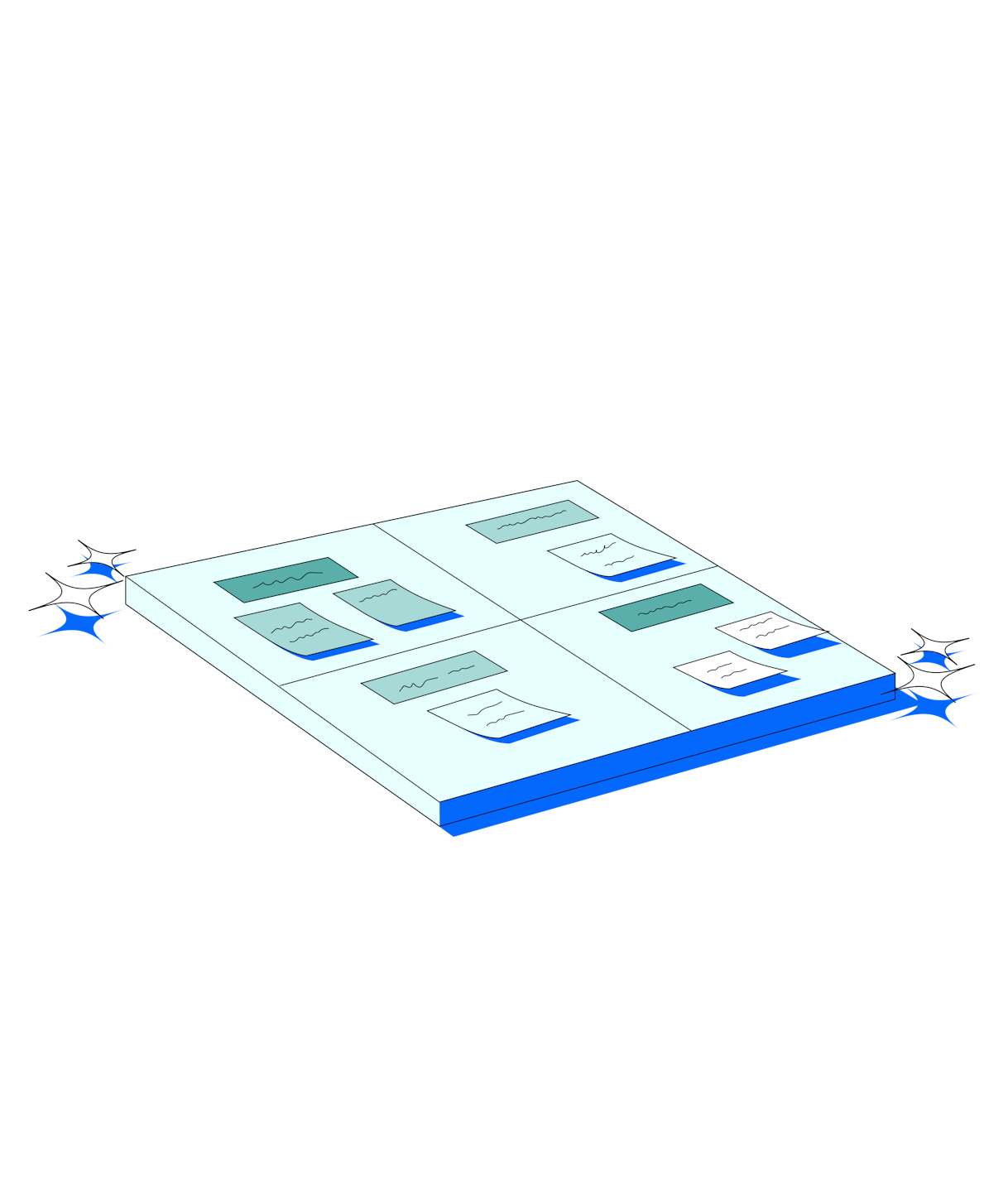With 58% of product professionals using AI tools in their product development process (source: 2025 Future of User Research Report), product managers are rapidly adopting AI as a copilot in product management.
But with new tools launching every week, it’s hard to know where to start. Read on for a breakdown of the most relevant, high-impact use cases for AI in product management.
TL;DR:
AI is fundamentally changing how product managers work across the product development cycle. AI tools for product managers can speed up research, automate manual tasks, and surface insights to support better product decisions.
How does AI support product management?
Product managers are under increasing pressure to move fast without losing sight of what users need. But bandwidth is tight, and the volume of data keeps growing. AI is helping teams close that gap.
Here’s where AI is already making a measurable difference for Product teams.
Strategic decision-making
Product roadmaps, feature prioritization, quarterly bets—every product decision depends on good information. But product signals come from too many places: feedback forms, usage data, product analytics, user interviews, competitors, and internal teams.
AI pulls those threads together. It surfaces patterns, flags outliers, and helps PMs see what’s changing—before it becomes a problem. That clarity helps teams prioritize what matters and defend those decisions with confidence.
AI organizes data and highlights key insights. It helps forecast demand, allowing product teams to make better roadmap decisions.
Peter Barnett
VP of Product Strategy at Action1
Share
Process automation
Manual tasks still eat into most Product teams’ time: formatting reports, summarizing interviews, and drafting UX research plans. AI handles those quickly and reliably—no templates and no context-switching needed.
In our Future of User Research Report 2025, 50% of Product teams shared they use AI for study planning, and 49% use it for reporting—a sign that automation is already baked into many product workflows.
Research, discovery, and analysis
When user research bottlenecks slow down discovery, product velocity stalls. 74% of product professionals said they use AI to analyze user research data, making it the most common AI use case in product development today.
AI speeds things up by processing unstructured data (like user interviews, UX surveys, support tickets) and turning it into clean, tagged insights ready to use, or even running AI-moderated interviews at scale.
User segmentation and personalization
AI segments users based on real-time behaviors—not static assumptions. You can spot high-value cohorts, detect churn risks early, and personalize onboarding or feature prompts based on how different groups interact with your product.
That level of precision leads to better adoption, more accurate user personas, and more informed product decisions.
Roadmap and prioritization support
Product feature requests come in from every angle—social listening and voice of customer processes, customer support, sales conversations, moderated interviews and more.
AI helps cut through the noise with techniques like AI thematic analysis, weighing feedback volume, user sentiment, and potential impact—so PMs can make prioritization calls backed by data.
How is AI used within the product development cycle?
From early discovery and ideation to post-launch UX optimization, Product teams are using AI to speed up research and analysis, remove bottlenecks, and make better decisions with less friction.
Here’s how AI can fit into the product development process.
1. Analyzing user feedback at scale
Product discovery starts with understanding user needs, but when you're dealing with thousands of survey responses, support tickets, or interview transcripts, it's easy to lose track.
AI helps by tagging themes, clustering feedback, and summarizing sentiment across sources. What used to take hours (or days) now takes minutes.
We use AI to triage inbound feedback from 10,000+ users a week, cluster pain points, and summarize sentiment without drowning in spreadsheets. That saves about 14 hours per PM every month.
Thomas Franklin
CEO of Swapped
Share
For example, Maze AI analyzes open-text responses from surveys and usability tests, suggests follow-up questions based on what users say, and helps optimize how you phrase questions to reduce cognitive bias.
After a test is completed, Maze AI generates a written summary of the key insights, highlighting recurring themes, user sentiment, and friction points. For product managers, that means no more manually tagging hundreds of comments. Instead, you get a clearer view of what users are telling you from the get-go.
2. Validating new feature ideas
Once you’ve identified the right problems to solve, the next step is testing possible solutions before you commit resources to build them.
This is where AI sharpens product judgment. It analyzes historical usage patterns, clusters similar feature requests, or reviews past feedback tied to specific pain points. AI helps PMs spot early demand signals. Instead of going with your gut or stakeholder pressure, you’re anchoring decisions in actual user data.
In the product development cycle, the real value comes early—during exploration and roadmap validation. We pipe usage patterns, support tickets, and competitor updates into a GPT-powered layer that suggests edge-case gaps.
Thomas Franklin
CEO of Swapped
Share
With Maze, you can validate feature ideas using low-fidelity flows, product concepts, or even short value propositions. For example, you might show a few simple screens of a mocked-up onboarding idea, then ask users whether the value is clear, what stands out, or what’s missing.
Maze supports this kind of concept validation through Prototype Testing and Feedback Surveys, helping you gauge interest, clarity, and perceived usefulness without needing a high-fidelity prototype.
It’s a practical application of AI tools in user research, making it easier to learn early and build with more clarity.
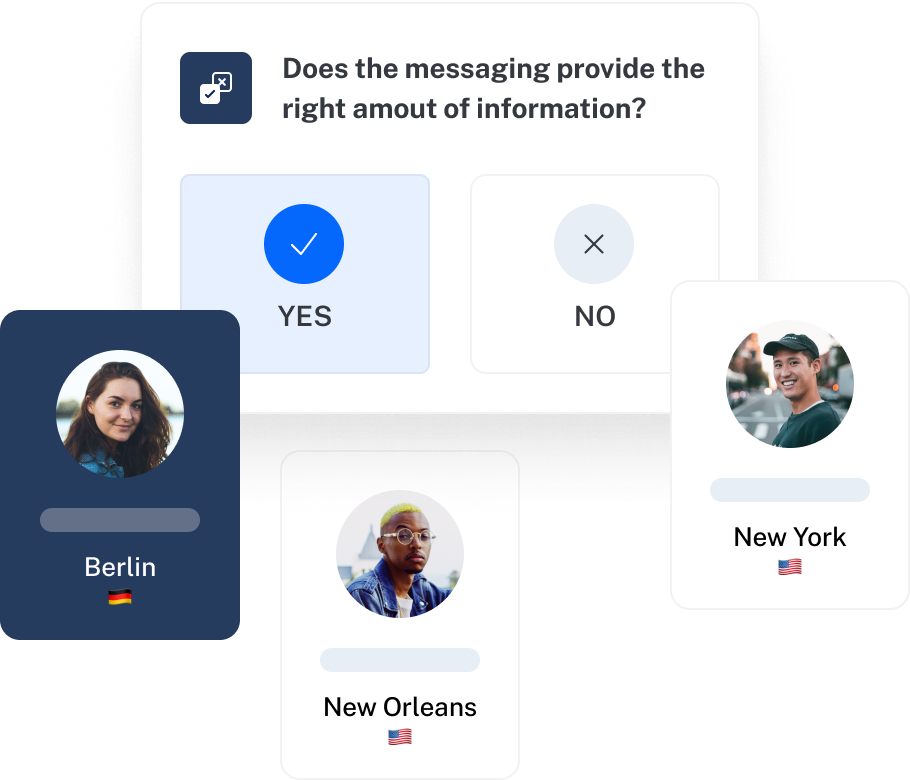
3. Prioritizing what to build
Once ideas are validated, the real challenge begins: deciding what actually makes it onto the roadmap. At this stage, PMs are often balancing requests from multiple directions—customer feedback, leadership input, competitor product analysis, and technical constraints.
AI helps connect the dots across all that input by spotting patterns, grouping related feature requests, and estimating potential impact. It’s where AI meets UX research—not to take over prioritization but to reduce noise so teams can make clearer, more strategic tradeoffs.
4. Accelerating prototyping and copy
Early-stage product work moves fast—or it stalls completely. **The goal at this point is momentum. **
AI helps speed up this phase in two key ways:
- Generating copy
- Helping teams build usable prototypes with less friction
Tools like ChatGPT, Claude or specialist AI tools for product design can help craft the best set of UX copy, while AI prototyping tools can whip up any variety of prototypes.
But building is only half the equation. Prototype testing is where the learning happens.
With Maze, you can import prototypes directly from Figma, Adobe XD, or Sketch and run usability tests with real users. Maze’s AI-enabled features capture usability metrics like time-on-screen, misclicks, and task completion, before generating visual reports, heatmaps, and usability scores to pinpoint what’s working (and what’s not).
It’s a core part of any AI research vision: blending human intuition with automation to shorten feedback loops and make early learning scalable.
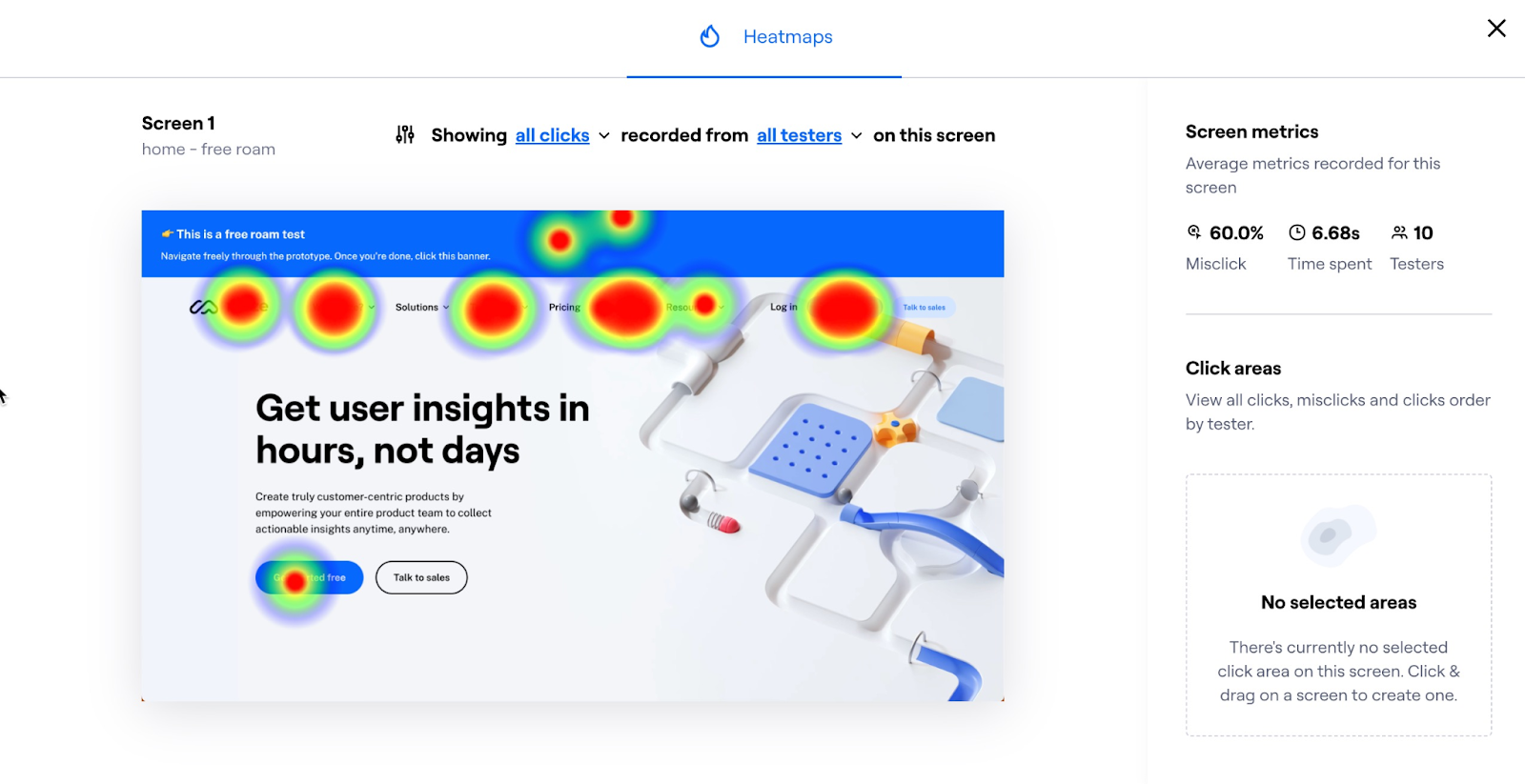
Tips for product managers using AI in product development
Ready to kick your product management up a gear by implementing AI? Here’s some hands-on tips to help you use AI more effectively at every stage of the product development cycle.
Deepen AI knowledge
You don’t need to learn to code or memorize machine learning frameworks, but you do need to understand how AI works if you want to use it well.
It’s worth building enough fluency to ask the right questions, sense-check outputs, and explain AI-driven insights to stakeholders who may not speak the language.
This kind of fluency is especially valuable in new product development, where PMs are often making fast decisions with incomplete data.
If you’re looking to build that baseline, here are some standout courses tailored to product managers:
- AI for Product Management – Pendo: A free, beginner-friendly course covering how to apply AI across the product lifecycle
- AI for Product Management – Mind the Product: Covers product-led growth and adapting strategies in the AI era
- Artificial Intelligence for Product Certification – Product School: Cohort-based training on building AI-native UX, roadmaps, and PRDs
- AI Product Manager Nanodegree – Udacity: A hands-on, project-driven program focused on integrating generative AI and datasets into real-world features
- IBM AI Product Manager Certificate – Coursera: Explores stakeholder management, foundation models, and AI delivery using Agile
- Generative AI for Product Managers – LinkedIn Learning: A quick 24-minute overview of using ChatGPT and GenAI tools in product workflows
- AI Product Management Specialization – Duke University on Coursera: Long-form course focused on ML, ethical AI, and real-world data science use cases
Ensure data quality and privacy
AI technologies are only as good as the data you give them (and how responsibly that data is handled). For product managers, this means two things: being thoughtful about data quality, and staying sharp on how your tools store, process, and protect user information.
Transparency matters—especially when AI is involved. For example, here’s how Maze uses AI models and protects your data:
- Maze doesn’t train its own models: It uses third-party providers like OpenAI and Rev AI to power AI features
- OpenAI is used for features like follow-up questions, themes, and summaries of user responses
- Rev AI powers automatic speech recognition for transcribing voice responses in user interviews
- Your data isn’t used to train AI models: Providers don’t use your study data (survey responses, test results, recordings etc.) to improve their models
- Any data sent through their APIs is retained for a maximum of 30 days—and then deleted permanently
- You can opt out of AI: If you're on Maze’s Organization plan, you can disable specific AI features for your team
As a PM, you don’t need to manage compliance solo but you should know how your tools are handling participant data. And as your team structure evolves, it’s worth aligning everyone—researchers, designers, and engineers—on how AI is used across the product stack.
Balancing human insight vs. AI automation
AI can do a lot: summarize user feedback, flag recurring themes, even suggest what to test next. But it doesn’t understand product vision, context, or tradeoffs—and it won’t take responsibility for the outcome. That’s your job.
AI can show you 300 user complaints. It can’t feel urgency. That’s the line. We let AI steer attention. Humans still steer the wheel.
Thomas Franklin
CEO of Swapped
Share
Use AI where it speeds you up without taking control:
- Let it summarize user interviews—but you decide what themes matter
- Use it to generate follow-up questions—but keep the conversation aligned to your goal
- Lean on it for idea comparison—but don’t let it choose the roadmap
The value is in balance. Automate clutter. Keep the calls strategic. Your job as a PM is to create space for better decisions. AI helps when it reduces noise. It hinders when it removes nuance.
AI in product development: An example
Let’s look at how a product manager might use AI-powered research tools—like Maze—to move from insight to action.
Sarah is a product manager at a fintech startup, responsible for improving the user experience of a mobile budgeting app. The app’s reviews are mixed. Users are frustrated by how hard it is to set up budgets or navigate their spending analytics. Sarah needs answers—but she also needs speed.
She starts by running a usability test in Maze focused on the two flows that get the most complaints:
- Setting up a budget
- Checking spending analytics
With Maze’s participant recruitment tool—Maze Panel—she targets active app users with different levels of financial literacy to reflect her audience.
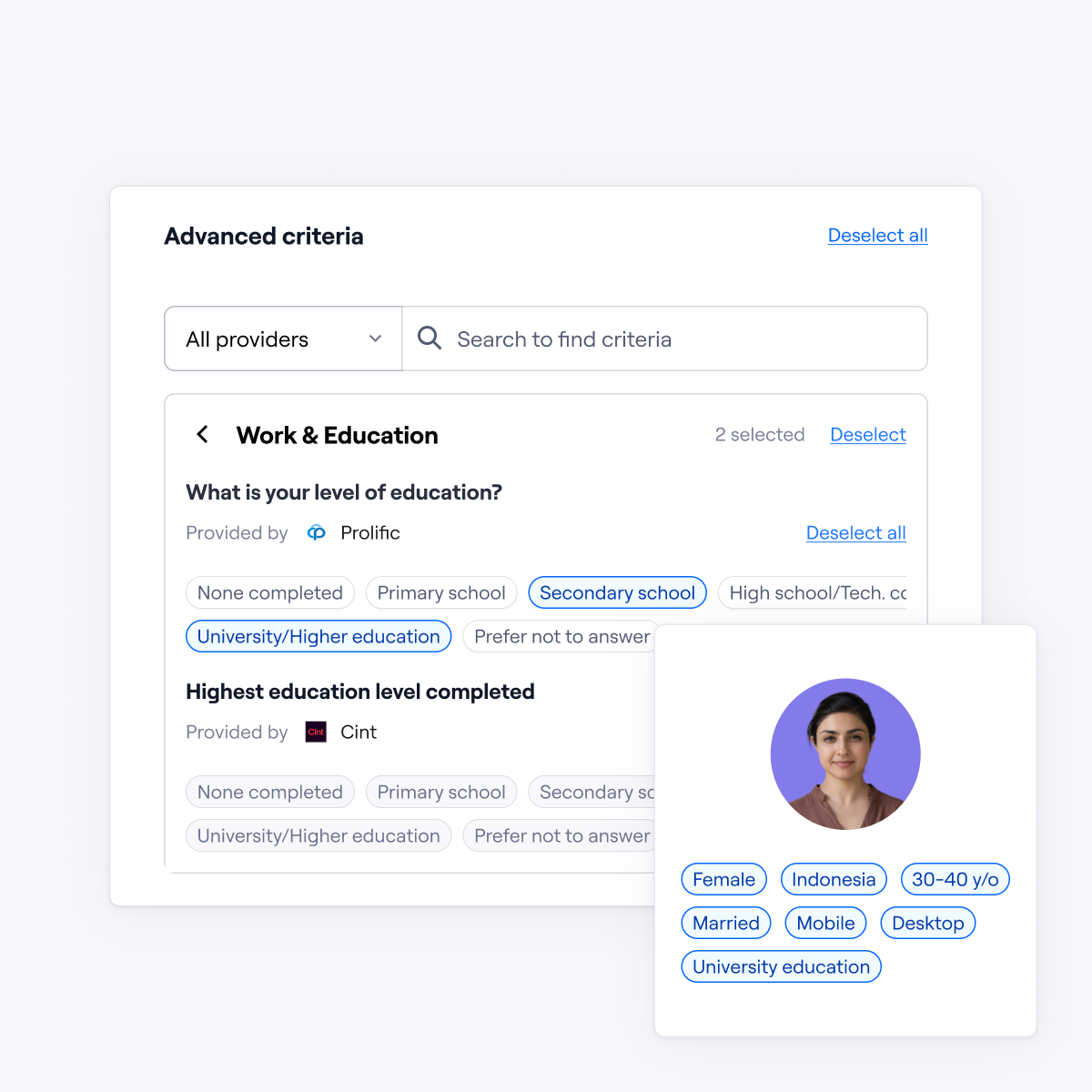
When she builds her test, The Perfect Question AI feature helps review and optimize the wording of her questions to remove grammatical errors and minimize cognitive bias.
Once the study’s launched, AI Follow-Ups automatically generate contextual follow-up questions to dip deeper into participant answers.
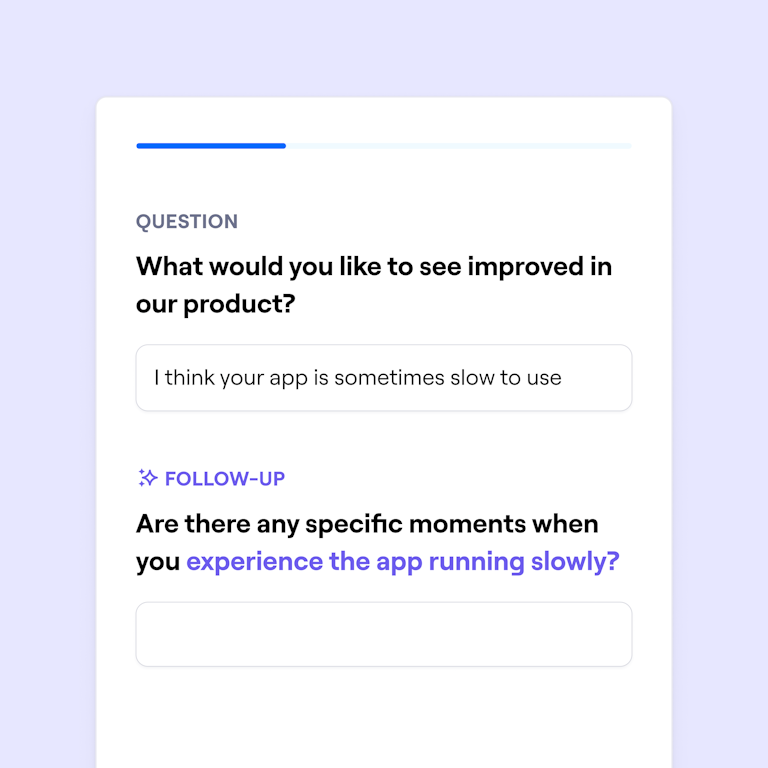
Once responses come in, Maze AI takes over the heavy lifting. It auto-tags open-ended feedback, highlights themes like “unclear labels” and “overwhelming menus,” and summarizes participant sentiment.
Sarah doesn’t need to comb through every response—she gets a clear picture of what’s going wrong and why, in a few minutes.
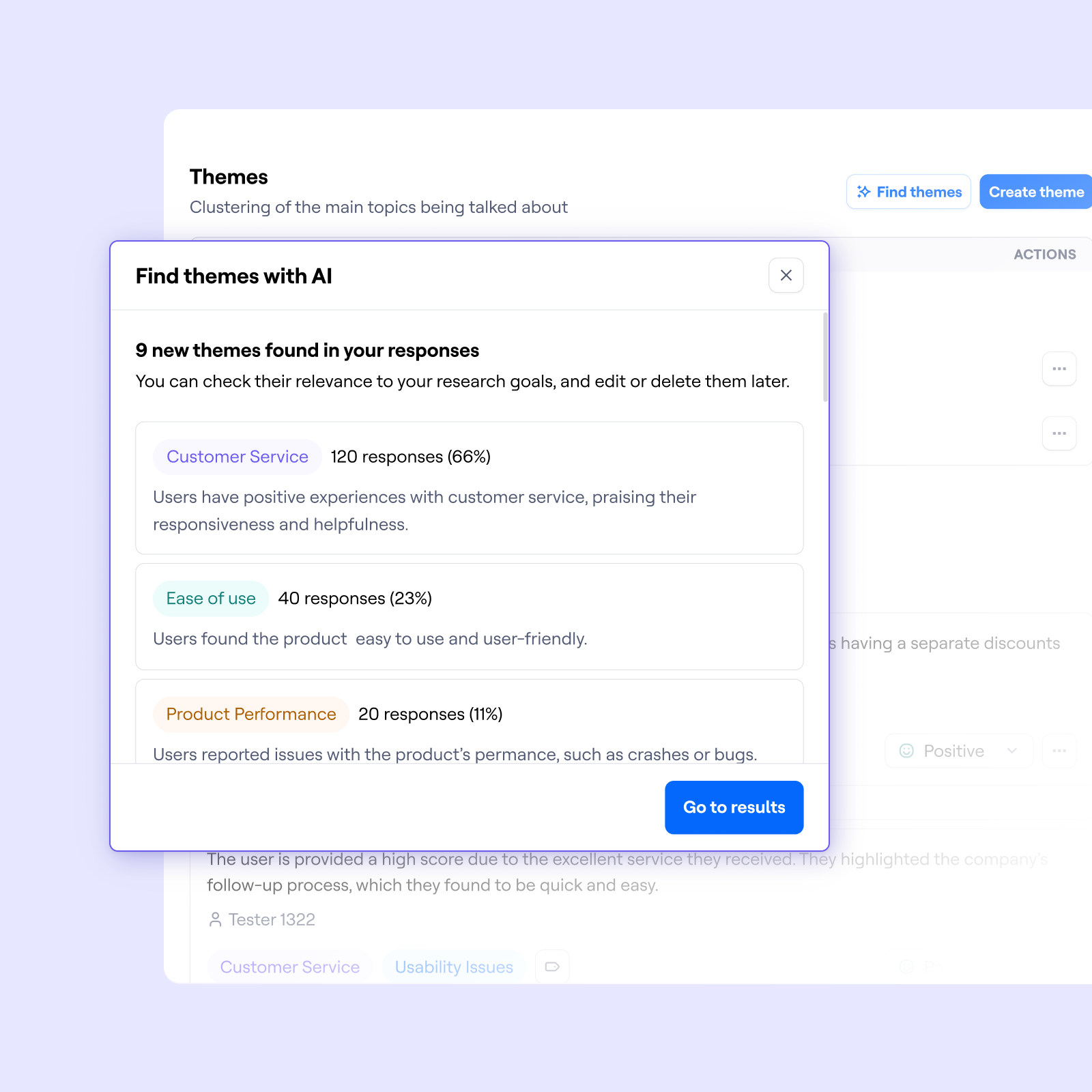
With these new user insights, Sarah works with the team’s UX designer to build a simpler prototype. They reorganize the menu, rewrite labels, and clean up visual noise.
She uploads the updated flow into Maze and reruns the test. This time, users complete the tasks faster, with fewer misclicks and far less drop-off. Maze automatically generates a UX research report summarizing the changes in performance, complete with usability scores, heatmaps, and user quotes.
Sarah shares the results with stakeholders, aligns the team on the next steps, and greenlights development—confident that the direction is backed by real user input.
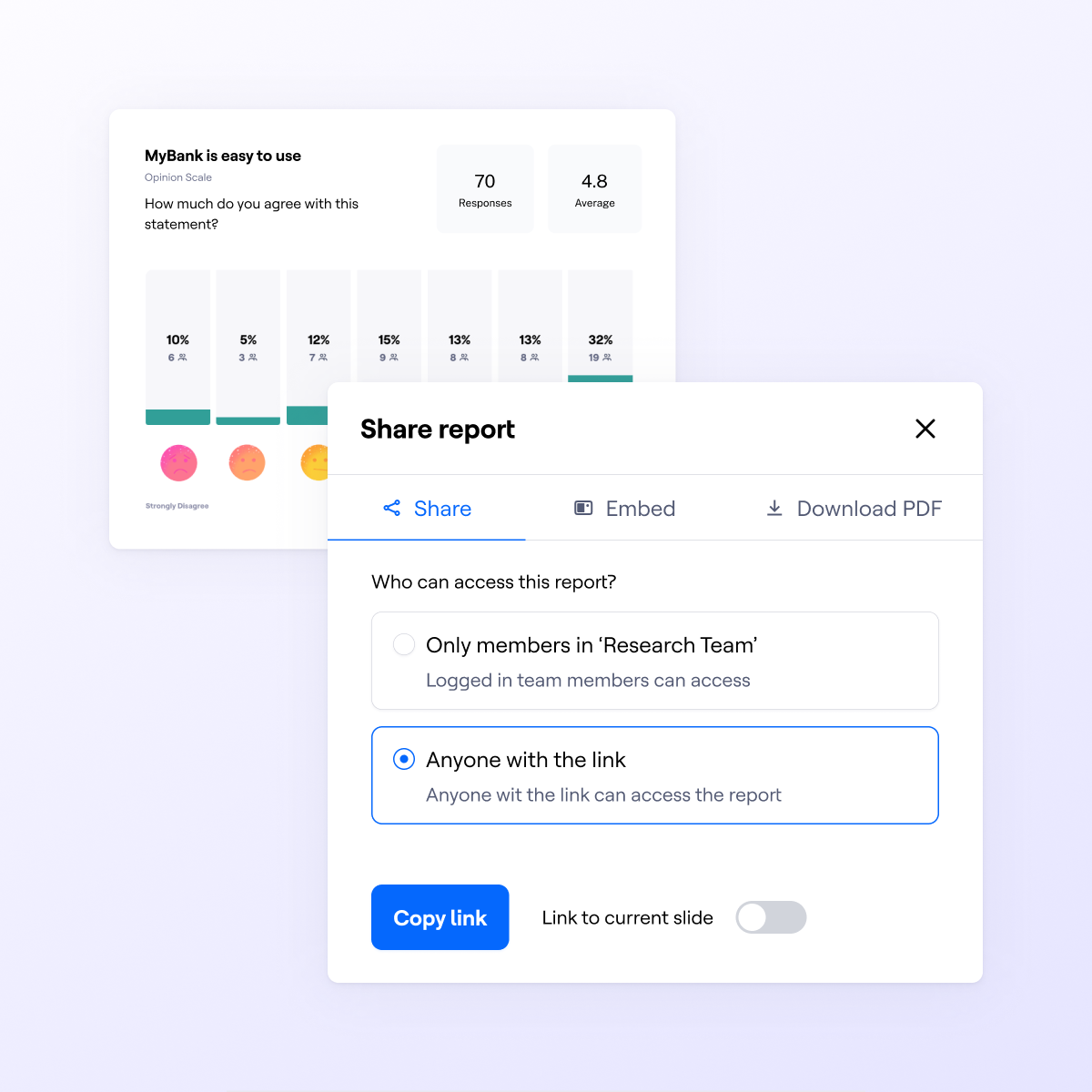
This is what product work looks like with AI in the loop: faster insights, tighter feedback cycles, and fewer wasted sprints.
Get AI support for product development
AI is changing how Product teams work. From gathering feedback to validating ideas and prioritizing features, it’s speeding up every part of the process. What used to take days now takes hours. AI-powered user research is driving this shift.
It helps teams listen at scale, spot patterns faster, and learn continuously without slowing momentum.
You don’t have to adopt everything at once. Start small, use AI to:
- Summarize usability feedback
- Improve your research questions
- Run a quick concept test in Maze
- Build trust in the tools one step at a time
AI-powered products won’t replace smart product-minded thinking—but it will help you do it better.
Bring AI into your product workflow
Skip the spreadsheets. Let Maze AI help you surface insights, test faster, and build with clarity from day one.
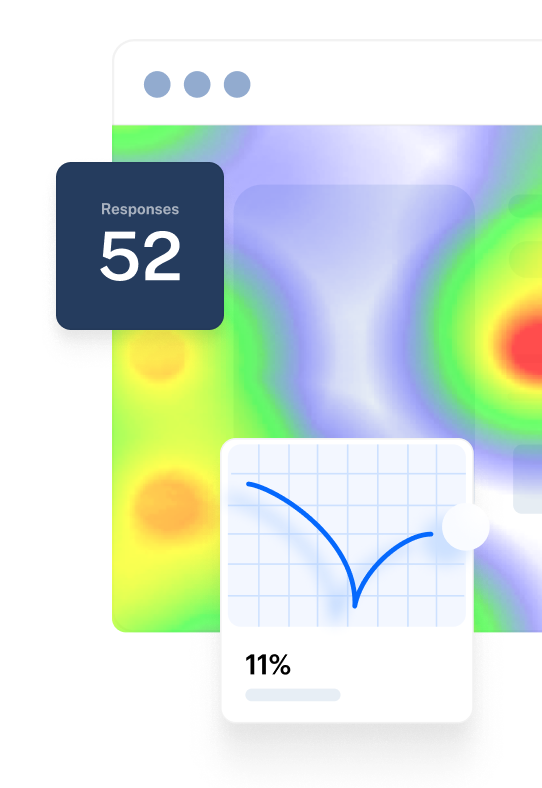
Frequently asked questions about AI in product management
Will AI replace product management?
Will AI replace product management?
No. AI won’t replace product management, but it will reshape it. AI systems and algorithms are great at organizing feedback, spotting patterns, and speeding up repetitive tasks. But AI can’t understand context, make tradeoffs, or rally a team around a vision. Product management is still a human job, but AI helps you do it better and faster.
How can AI help product managers?
How can AI help product managers?
AI helps product managers move faster and make more confident decisions. It can analyze user feedback, summarize research results, optimize survey questions, and surface trends across data. Tools with AI integrations, like Maze AI, make that support easier to integrate into everyday workflows.



